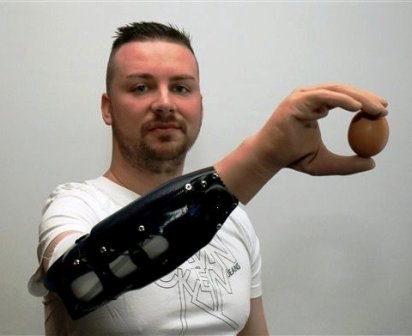The Better Educator for a New Prosthesis

Overcoming disability with a new prosthesis requires education. The recipient needs to learn how to use the new prosthesis. So who is the best teacher?
A study from the School of Applied Physiology of the Georgia Institute of Technology published earlier this month found something at once interesting and important: recipients of new upper limb prostheses learn better how to use their new prostheses when watching another recipient -- not a healthy teacher. This observation resulted from a study designed on the basis of prior work that showed improved behavior when prosthesis recipients learned certain functions by mimicking the actions of other prosthesis receipients. It was specifically designed to to look at the activity of brain regions associated with motor movement upon training by other recipients versus non-recipients.
The results showed that training by other recipients led to more activity in the movement areas. They also showed more activity in regions of the brain associated with visual perception. In a follow-up interview, Dr. Lewis Wheaton, the study's lead author added that recipients who learned from other recipients functioned better, with more consistent and smoother motions.
So this raises a question of generalizability: in which kinds of prosthetic work is the observation about the effect of type of trainer reproducible? Does it relate to hip and knee implants? ankle replacement? It also raises a questions of propriety. What happens when a man receives a penile prosthesis? Who trains him? Another man who received a penile prosthesis? This seems very unlikely. So if not, and given that upper limb amputees learn poorly from unamputated trainers, are men with penile prostheses at a relative disadvantage? Is it the case that they are in need of more thoughtful learning methods to help them reach maximal function and satisfaction? Can their sexual partners be brought in to help?
Surgeo Blog applauds Wheaton et al for shedding original and thoughtful light onto the needs of and possible solutions for patients with physical disabilities. If anyone learns of more teaching tools for prostheses recipients, please keep us informed.












